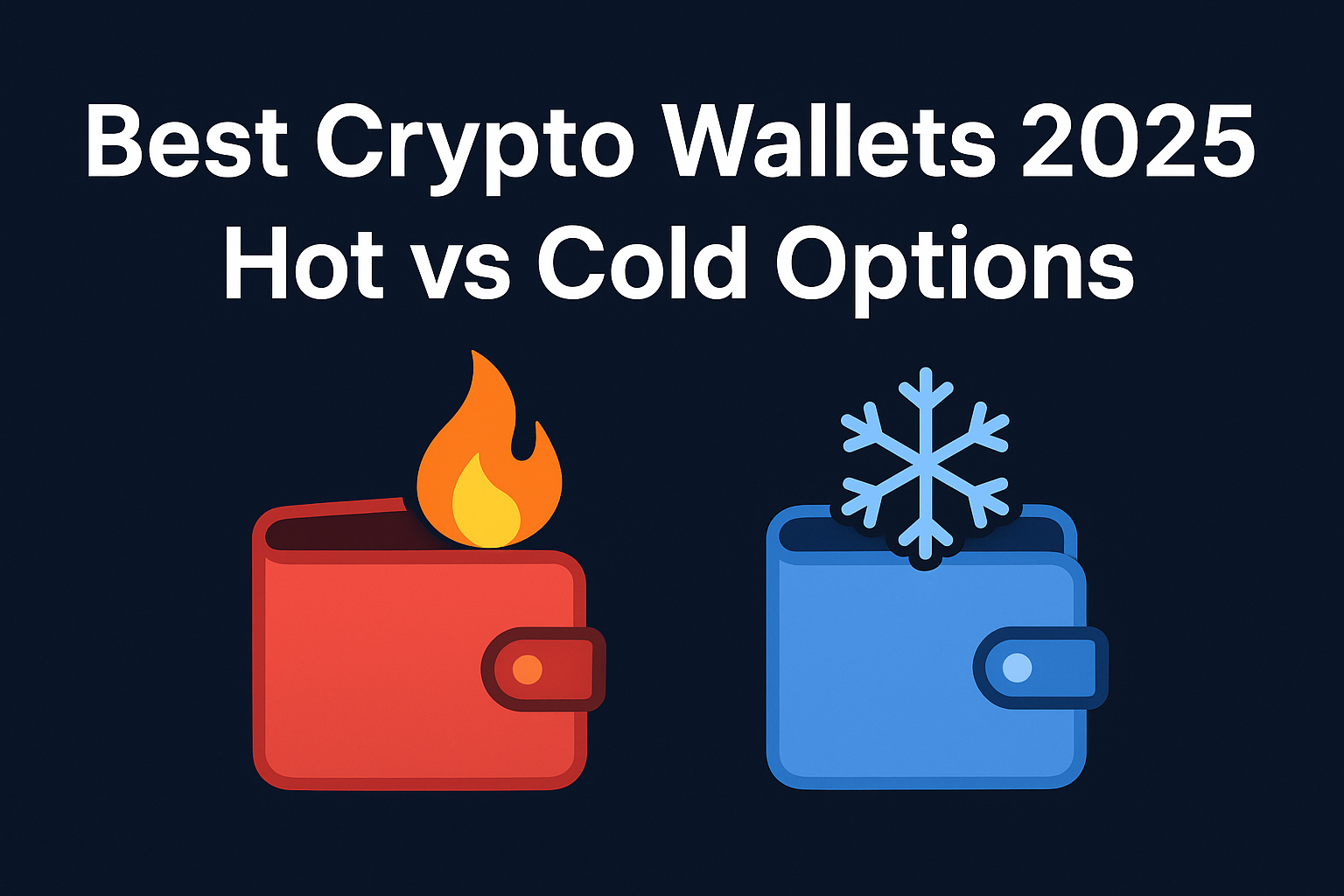🔐 Best Crypto Wallets 2025: Hot vs Cold Options
As cryptocurrency adoption grows in 2025, securing digital assets has never been more important. Choosing the right wallet is one of the first — and most crucial — steps for every crypto investor. But with so many options, which wallet should you trust?
In this guide, we’ll compare the best hot wallets (online) and cold wallets (offline) in 2025, so you can keep your assets safe and accessible.

🛠️ What Is a Crypto Wallet?
A crypto wallet is a tool that allows you to store, send, and receive cryptocurrencies. Unlike a physical wallet, it doesn’t store coins directly — instead, it stores your private keys, which prove ownership of your assets on the blockchain.
There are two main types:
Hot Wallets — connected to the internet (mobile apps, browser extensions).
Cold Wallets — offline storage (hardware devices, paper wallets).
🌐 Best Hot Wallets in 2025
Hot wallets are popular for their convenience. They are ideal for active traders and those exploring NFTs, DeFi, and Web3 apps.
1. MetaMask
Best for: Web3 and NFTs
Why in 2025: Still the go-to wallet for Ethereum, Polygon, and other EVM-compatible chains. Seamless dApp integration.
Pros: Free, easy to use, NFT support.
Cons: Online-only; vulnerable if not secured properly.
2. Trust Wallet
Best for: Multi-chain beginners
Why in 2025: Supports 70+ blockchains and thousands of tokens. Backed by Binance.
Pros: Wide support, simple mobile app, staking features.
Cons: Mobile-first; limited desktop functionality.
3. Coinbase Wallet
Best for: Beginners and U.S. users
Why in 2025: Strong integration with Coinbase exchange, easy fiat on/off ramps.
Pros: User-friendly, insured to a degree, NFT support.
Cons: Custodial risk if synced with Coinbase account.
❄️ Best Cold Wallets in 2025
Cold wallets are the safest option for long-term holders, investors with large portfolios, or anyone serious about protecting their assets from hacks.
1. Ledger Nano X
Best for: Long-term holders
Why in 2025: Bluetooth-enabled, supports 5,500+ coins, strong reputation.
Pros: Proven security, mobile compatibility, large ecosystem.
Cons: Costs around $150; requires setup.
2. Trezor Model T
Best for: Advanced users
Why in 2025: Open-source, intuitive touchscreen, great reputation for transparency.
Pros: User-friendly, strong community support, highly secure.
Cons: Price (~$200), larger size than Ledger.
3. Ellipal Titan
Best for: Maximum offline security
Why in 2025: Fully air-gapped (no WiFi, no Bluetooth, no USB). Transactions via QR code.
Pros: Military-grade metal case, immune to remote hacks.
Cons: Less convenient for frequent use; higher cost.
🔑 Hot Wallets vs Cold Wallets: Which Should You Choose?
Feature | Hot Wallets (Online) | Cold Wallets (Offline) |
|---|---|---|
Security | Medium – vulnerable to hacks | Very High – offline storage |
Convenience | High – instant access | Low – requires device setup |
Cost | Usually Free | $100–$250 |
Best For | Active traders, NFT/DeFi users | Long-term investors, large portfolios |
👉 Pro Tip: Many experienced investors use both — a hot wallet for daily use and a cold wallet for long-term storage.
⚠️ Security Tips for 2025
Never share your seed phrase. It’s the master key to your wallet.
Enable 2FA (two-factor authentication) on exchanges and apps.
Use hardware wallets for savings and hot wallets for daily use.
Beware of phishing links — always check the official website.
🎯 Conclusion
In 2025, the best crypto wallet depends on your goals:
If you’re an NFT collector or DeFi user, hot wallets like MetaMask or Trust Wallet will serve you best.
If you’re a long-term investor, hardware wallets like Ledger Nano X or Trezor Model T provide unmatched security.
No matter which option you choose, remember: your wallet is your bank in the crypto world. Protect it wisely.
👉 Stay ahead with NFTBirdies Calendar — track the latest NFT drops and Web3 projects while keeping your assets secure.
Topics
Recent comments
